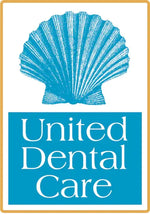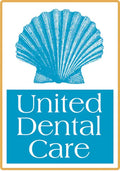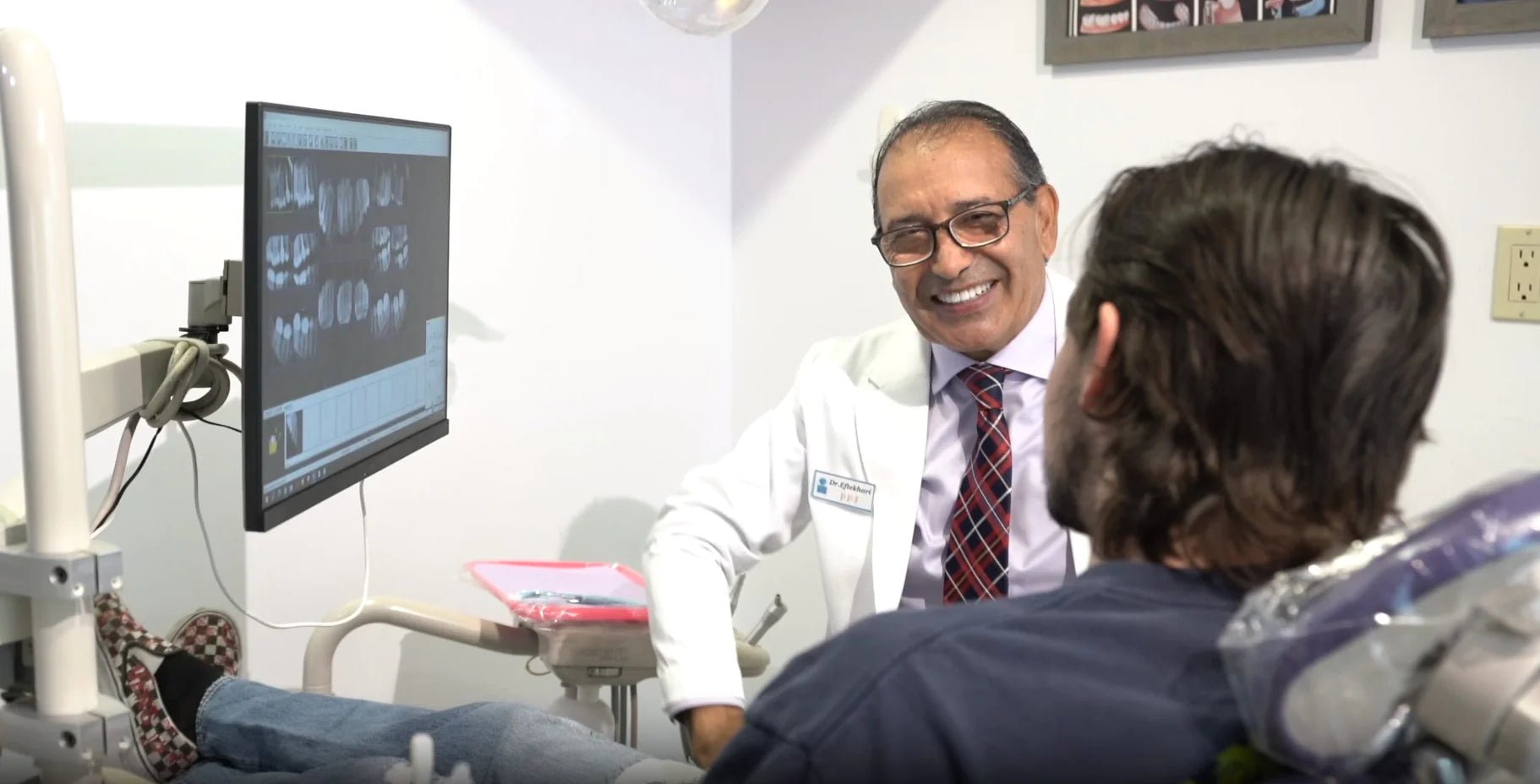Infection After Tooth Extraction:
Signs, Prevention, and Treatment

Modern practice in dentistry nowadays makes tooth extraction almost a risk-free procedure. In fact, a study shows that only 25 out of 1821 patients reported postoperative infection.
However, despite a slim chance of infection, you still cannot disregard its possibility. You must know its signs, how to prevent it, and what to do when you experience it.
If not treated in its early stage, post-extraction infection can spread to adjacent structures and be life-threatening once it becomes so severe.
Here are the things you need to know to save yourself from possible risks.
Signs of infection after tooth extraction
The first signs of infection start with prolonged bleeding, persistent pain, and swelling not fading within the first 24 hours. As it progresses, you will experience a fever. Then you will notice a foul smell and taste in your mouth. You might also see some discharge in the area.
Tooth extraction infection can occur within two days after the procedure, and you will quickly notice its sign within the first 24 hours.
Remember that tooth infection won't heal on its own. It needs to be attended by a dental professional. If properly addressed, infection will only last for a week or longer, depending on its severity.
Let's look at each of these symptoms.
Swelling and redness
An extracted area's swelling and redness typically lasts 24 to 48 hours. If they don't subside during that period, they might be infected.
Once you have your tooth extracted, the area where it is removed is vulnerable to bacteria that can infect the gums.
The gums swell and turn reddish once they penetrate the wound. It may reach the bone or, worse, the bloodstream causing a patient to experience sepsis (bacteria reaching the bloodstream, which can affect the function of the vital organs).
Persistent pain or discomfort
Pain and discomfort are usually experienced after tooth extraction. They can last two to three days up to a week. If they persist outside the expected time, you may have an infection.
The typical pain and discomfort that occur after tooth removal gradually subsides as the area heals. However, the pain caused by infection intensifies each day. It is commonly accompanied by swelling and redness of the gums.
Excessive or prolonged bleeding
Prolonged or excessive bleeding is one of the first symptoms you will notice. You cannot avoid bleeding when you have your tooth extracted. However, it should stop in a certain period.
Normal bleeding usually lasts for a few minutes, up to 24 hours. According to a study, the formation of blood clots within 8 to 12 hours stops your wound from continuously bleeding. Outside those periods, it is considered excessive and prolonged bleeding that may indicate an infection.
Foul odor or taste
It is uncommon for most patients to experience a foul odor or bad taste even after tooth extraction. If you experience this symptom, it can be a sign of infection.
When you have an infection, bacteria penetrate your wounds and may produce pus (thick yellowish or greenish liquid found in the infected area).
Pus consists of dead white blood cells, tissue debris, and bacteria, which are the source of your mouth's foul odor or bitter taste sometimes.
Elevated body temperature
One of the most common symptoms of infection after tooth extraction is fever or elevated body temperature.
When your body reacts to an infection, your immune system will try to fight it. Your body will then produce pyrogens which send a message to your hypothalamus to increase your body temperature to fight the infection.
You may also experience the following signs and symptoms accompanying each sign of infection:
- Swelling in the jaw and glands in your neck
- Pain extending to your jawline
Being aware of any signs of any possible problem after a tooth extraction is also vital in your recovery. It can prevent you from potential problems and can save you time and money.
Complications and long-term effects
According to a study, 13% of adults seek dental care due to infection. If left untreated, there are many possible complications and long-term effects it can have on you.
It can spread on the adjacent teeth or the jawbone. Other complications, based on a study, can even be life-threatening.
Possible complications and long-term effects may include:
Dry socket
Once you have an infection or infected socket after tooth extraction, it can hinder the formation of blood clots, leading to a dry socket.
This condition occurs and is formed when the blood clot in the socket where your tooth is removed is dislodged or dissolved. It exposes the underlying nerves and bones, causing severe pain and delayed healing.
The symptoms of dry socket usually begin 2 to 4 days after extraction. Its symptoms are severe pain, partial or total loss of blood clots in the extraction area, and visible bone in the exposed socket.
To fix it, you need to go to your dentist so they can clean it and apply some medicated dressing to ease the pain and promote healing. They may also prescribe pain medication and suggest rinsing your mouth with salt water.
Abscess formation
Infection after tooth extraction can also lead to abscess formation. It is a pus pocket made of bacteria, dead white blood cells, and tissues. Its common symptoms are foul odor and taste in your mouth, severe pain, fever, and swelling of the gums.
It can lead to severe pain and spread to other teeth and gums. Worse, it can also spread to other body parts, such as the jaw and neck, and can be life-threatening.
Your dentist would need to drain the abscess and might need to perform a root canal to remove the infected tissue.
Spread of infection to adjacent structures
An untreated infection can spread to adjacent structures, such as gums and teeth. They can also spread to other parts of your body (e.g., jawbone, neck, sinuses). If it becomes more severe, it can be life-threatening.
Once you feel any symptoms of infection after tooth extraction, don't hesitate to go to your dentist immediately to get it treated.
Risk factors and prevention strategies
After your tooth extraction procedure, you are prescribed by your dentist antibiotics to prevent infection. However, without proper post-operative care or if you have a particular medical condition, you are still not safe from it.
Some possible factors that can increase the risk of infections are poor oral hygiene practices, smoking tobacco, or a particular medical condition such as a problem in your immune system. It is still better to prevent doing things that can increase the possibility of infection.
Let's look at some factors that can pose a risk of post-extraction infection.
Poor oral hygiene practices
Without good oral hygiene, your mouth will accumulate plaque and bacteria that can penetrate the extraction area.
Once the area is infected, you will experience pain, inflammation, and pus build-up leading to a more significant problem like sepsis.
To prevent infection due to poor oral hygiene, brush and floss twice daily.
Rinse your mouth with warm saltwater thrice daily or use antiseptic mouthwash. It is also recommended to avoid drinking alcoholic beverages and smoking.
Smoking and tobacco use
If you have your tooth removed, smoking and tobacco use can highly affect the healing process of the extracted area.
It impairs the wound's blood flow and oxygen supply, slowing its healing. It also promotes bacterial growth.
Medical conditions and compromised immune system
According to a study, if a patient is healthy and fit, there is only a 10% possibility of post-extraction infection. However, it increases if you have a special medical condition, such as a low immune system.
The immune system plays a significant role in fighting infection. To ensure your immune system is always in good condition, have a balanced diet, drink plenty of water, and have enough rest.
You should also avoid contact with sick people, wear a mask in public and always wash your hands.
But what if you still have one after doing everything to avoid infection after wisdom tooth extraction?
What should you do?
Treatment options for infection after tooth extraction
Extraction-related infections are considered dental emergencies. The typical duration of treatment for an extraction site or infection takes three days to two weeks, but in some severe cases, it can take a few months.
But infections should only last briefly, especially if you consider the following treatment options.
Antibiotics and antimicrobial rinses
The most common treatment for infection after tooth extraction is antibiotics and antimicrobial rinses. Antibiotics are prescribed as a preventive measure and cure for infection.
It kills and prevents bacteria from reproducing. Similarly, the antimicrobial rinse can kill bacteria in your mouth and create a protective layer that protects your teeth from acid.
When taking antibiotics, you must take them for a week or as your dentist prescribes. Penicillin is considered the mother of all antibiotics and can also be considered the strongest among all antibiotics. It is commonly recommended for acute oral infections such as dental abscesses.
The easiest way to get your hands on antibiotics for infection after a tooth extraction is by consulting your dentist or doctor. They will examine your situation and prescribe antibiotics to address your infection.
Pain management techniques
Treating the infection after tooth extraction with antibiotics may not be enough, especially in managing its pain and discomfort. Here are some of the things you can do to relieve you from discomfort, continued swelling and pain.
- Take painkillers as prescribed by your dentist or doctor.
- Use over-the-counter anti-inflammatory drugs such as Ibuprofen, Advil, or Motrin.
- Rinse your mouth with warm saltwater at least thrice a day.
- Take a rest.
- Use analgesic dressing or other topical pain reliever.
Professional intervention and follow-up care
The most effective option you can do to treat your infection after tooth extraction is to seek professional dental care.
It is essential for patients to be diagnosed and treated by someone who can cure an infection.
Upon evaluating your situation, your dentist can design the perfect plan for your needs. They can prescribe the proper medicine and help you manage your pain and discomfort.
Practical tips for recovery after tooth extraction
You need to do several things to ensure fast and smooth extraction recovery. One of them is managing your pain and discomfort.
You can take painkillers prescribed by your doctor or over-the-counter pain relievers (e.g., Advil, Ibuprofen) to manage them. You can also apply ice packs to lessen the swelling and rinse with salt water multiple times daily.
Regarding food, it is recommended that you have a liquid diet or eat soft food to promote healing and avoid infection.
You can eat soft fruits and vegetables like bananas or pureed carrots. You can eat protein-rich food like fish or eggs. You can also have yogurt, cheese, milk, soups, and smoothies.
Oral Hygiene practices during recovery
Proper oral hygiene is vital to your recovery process after tooth extraction. Good oral hygiene can minimize the risk of infection, and it can hasten the healing of wounds.
Here are the following steps you should do:
- Rinse your mouth with salt water 24 hours after the extraction.
- Brush your mouth gently 24 hours after extraction to avoid dislodging the blood clot.
- Smoking can delay the healing process. Stop smoking for at least 72 hours.
Consult a dentist in Culver City
You can avoid infection by doing a proper tooth extraction aftercare (e.g., oral hygiene, managing pain, avoiding smoking, and strenuous activity).
If you cannot avoid infection for some reason, detecting the early signs and treating it in its early stage is the best thing to do.
So, if you are experiencing any signs of infection after tooth extraction, consult our dentist at Culver City Dentist United Dental Care.




 By:
By: 

